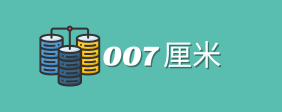Lead filtering is a critical process in sales and marketing, helping businesses focus their efforts on prospects with the highest potential for conversion. By properly segmenting and prioritizing phone contacts, companies can maximize sales efficiency, enhance customer engagement, and improve overall conversion rates. In this guide, we’ll explore how to filter leads effectively and optimize phone-based outreach.
The Importance of Lead Filtering in Sales
Filtering leads ensures that sales uganda phone number list teams allocate their time and resources to contacts most likely to convert. Benefits include:
- Higher conversion rates by focusing on qualified leads
- Improved customer interactions through personalized engagement
- Optimized sales efforts with structured lead prioritization
Criteria for Effective Lead Filtering
H2: Identifying High-Priority Leads
Certain characteristics indicate a lead’s likelihood of making a purchase.
H3: Engagement & Interaction History
- Leads who frequently respond to phone calls or SMS campaigns
- Contacts that interact with data hygiene & phone lists: why keeping your numbers clean boosts conversions promotional messages or inquiries
H3: Purchase Intent & Past Behavior
- Customers who have shown interest in similar products or services
- Past buyers looking for upgrades or repeat purchases
Segmenting Phone Contacts for Maximum Sales
H2: Creating Lead Categories Based on Potential
Grouping leads into categories helps tailor communication strategies for better results.
H3: Hot Leads (High-Intent Buyers)
- Recently expressed strong purchase interest
- Actively searching for products or services
- Requires immediate follow-up and personalized offers
H3: Warm Leads (Interested but Undecided)
- Have engaged with the brand but need further persuasion
- Benefit from nurturing artificial intelligence database campaigns and targeted promotions
H3: Cold Leads (Minimal Engagement)
- No recent interaction with calls or marketing materials
- Require long-term follow-ups or re-engagement efforts
Automating Lead Filtering with AI & Data Analytics
H2: Using AI to Streamline Lead Qualification
Modern technology enables businesses to filter leads faster and more accurately.
H3: Predictive Lead Scoring
- AI assigns scores to leads based on interaction history and behavior
- Sales teams focus on top-performing leads for maximum conversions
H3: Automated Data Analysis
- Machine learning detects patterns in phone interactions
- Businesses optimize messaging and timing for better engagement
Best Practices for Lead Filtering Success
H2: Enhancing Sales Outreach with Prioritized Leads
Maximizing sales efficiency requires a structured approach to lead filtering.
H3: Personalized Sales Strategies
- Craft custom messaging based on lead segmentation
- Offer exclusive discounts or incentives to high-priority leads
H3: Continuous Lead Evaluation
- Regularly update and refine lead categories
- Adjust outreach tactics based on changing consumer behavior
Conclusion
Effective lead filtering transforms phone contact lists into powerful sales tools. By segmenting leads, leveraging AI, and focusing on high-intent customers, businesses can maximize conversions while optimizing sales processes. Prioritizing the right contacts ensures better engagement, higher efficiency, and greater revenue growth.
